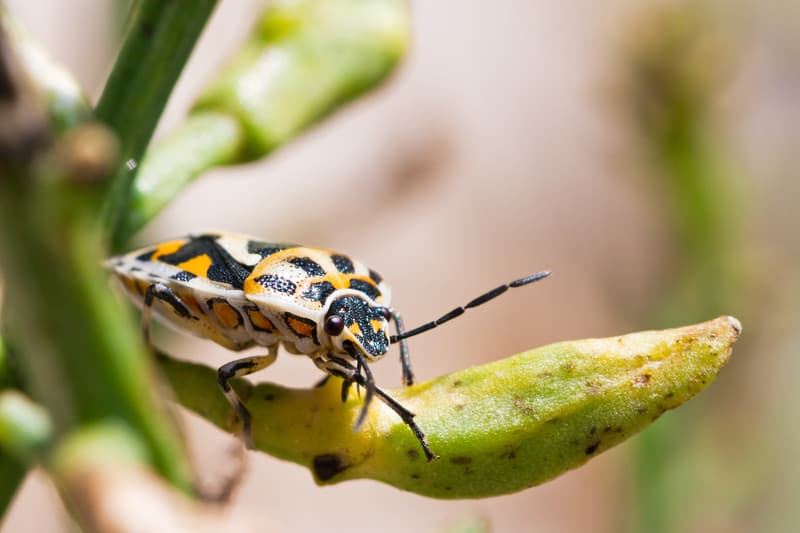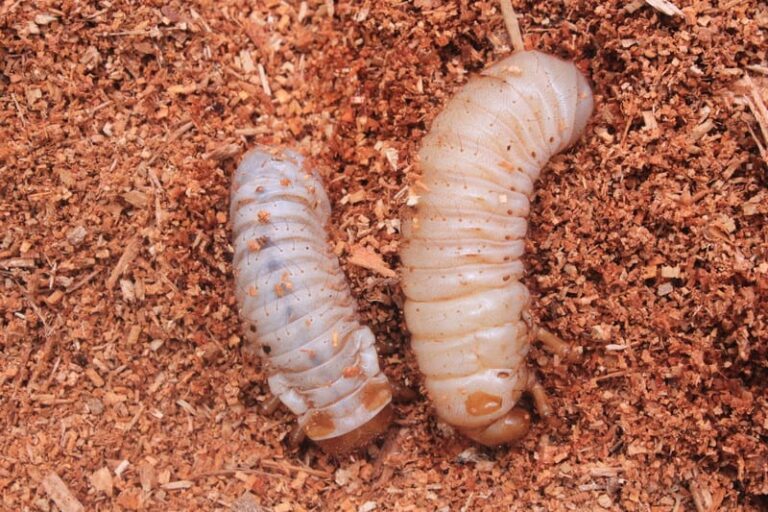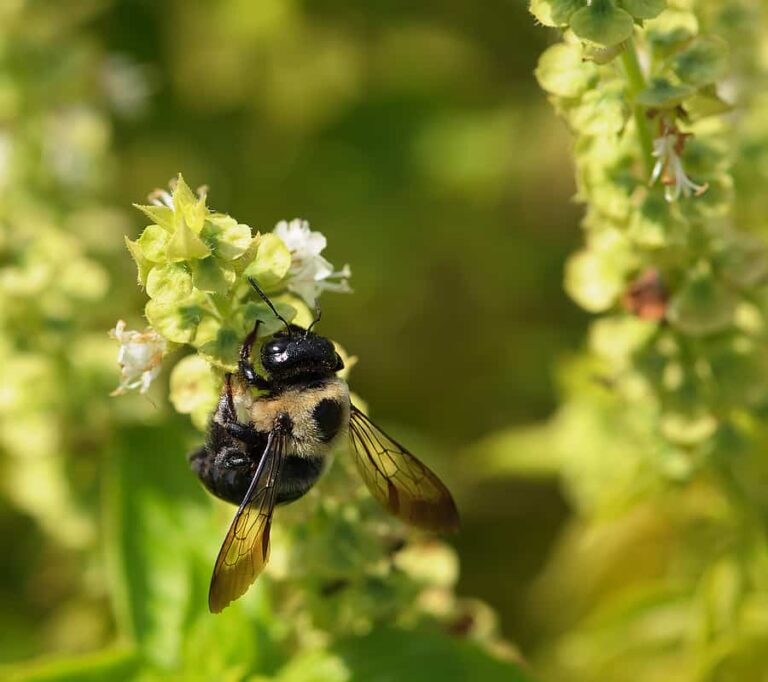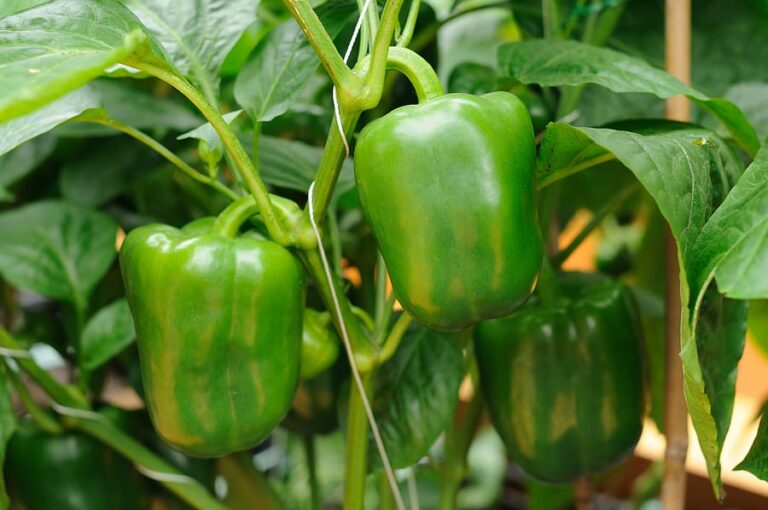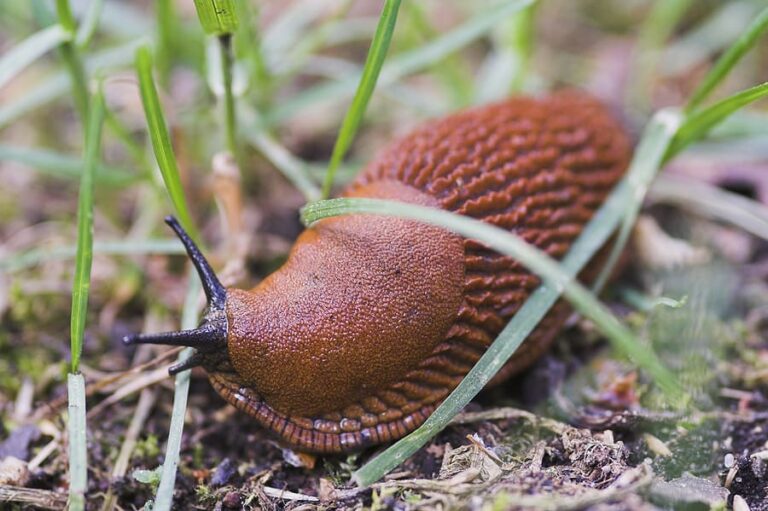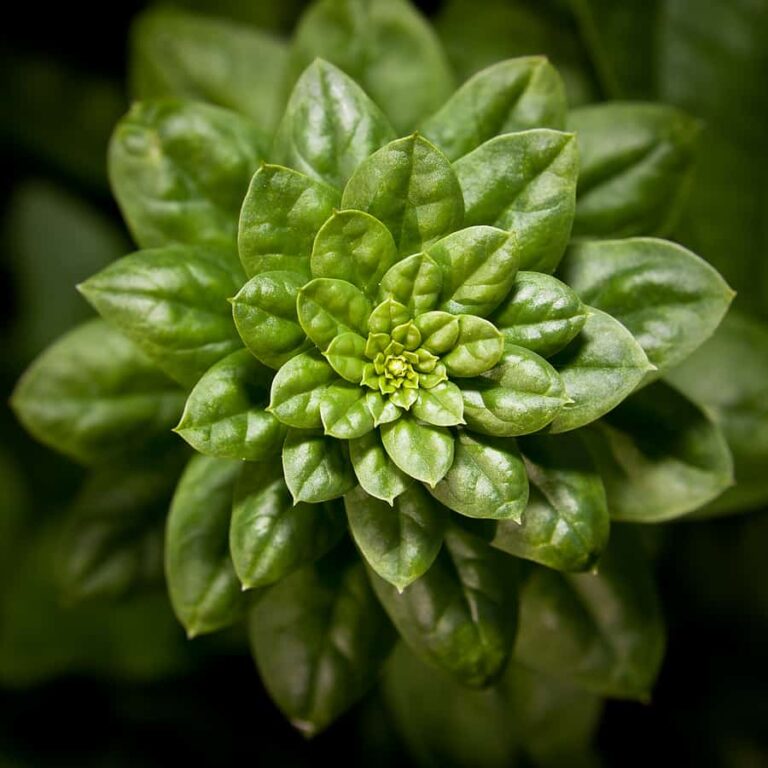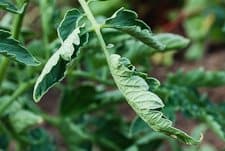Harlequin Bug Organic Pest Control
Harlequin bugs are shield-shaped, have black-and-orange or black-and-red triangles on the back, and are about ¼-inch long. The harlequin bug is a type of stink bug; it releases a foul odor when disturbed.
Harlequin bugs–also called shield bugs–suck plant sap from cabbage-family crops and other vegetables.
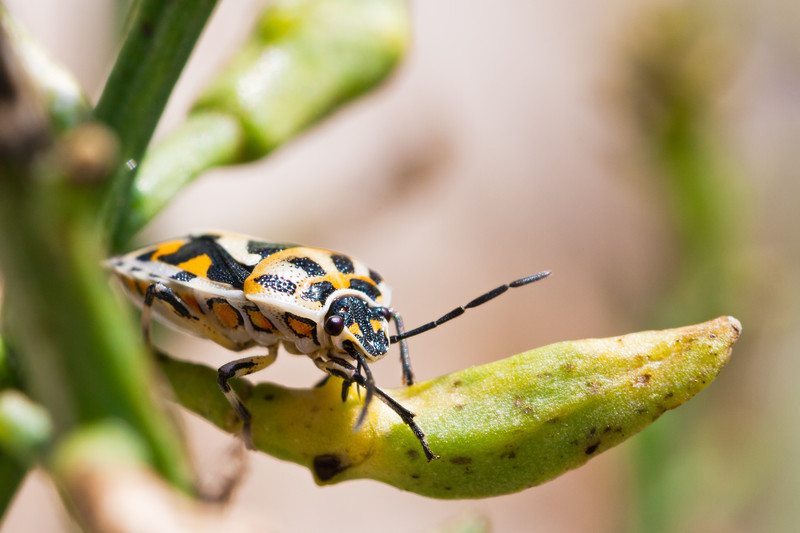
Harlequin bugs overwinter in garden debris and weeds. The females lay 300 to 500 distinctive eggs in neat double rows on leaf undersides in spring. The eggs look like tiny white barrels with black hoops. Eggs hatch in a week and nymphs emerge.
Good Products for Pest and Disease Control at Amazon:
- Garden Safe Snail and Slug Bait
- Bonide Sulfur Fungicide
- Monterey BT Caterpillar Killer
- Neem Bliss 100-% Cold Pressed Neem Oil
- Safer Brand Insect Killing Soap
- PyGanic Botanical Insecticide
Nymphs are red and black and oval and feed for a few weeks; they become adults in about 5 weeks. There are usually three or four generations annually. In very warm winter regions, breeding can go on all year.
Harlequin bugs are found largely in the southern half of the United States.
Scientific name: Murgantia histrionica, Family Pentatomidae
Target plants
Cabbage, broccoli, Brussels sprouts, cauliflower, collard, kale, and kohlrabi; also squash, beans, peas, corn, eggplants, tomatoes, mustard, radish, turnip, cherries, and peaches.
Feeding habits and damage
Harlequin bug adults and nymphs suck plant sap from leaves, flowers, buds, fruit, and seeds of cabbage family crops. Punctures made at feeding time can cause leaves to be blotchy and wilt; feeding causes scarring and dimpling on fruits. Seedlings attacked by harlequin bugs usually do not survive.
Organic controls
Insecticidal soap for light infestations. As a last resort, dust or spray with pyrethrum, rotenone, or sabadilla if the infestation is serious.
Organic control calendar
Here is what you can do seasonally to control harlequin bugs:
- Before planting: Remove or mow weeds near the garden. Attract native parasitic wasps and flies by planting small-flowered plants
- At planting time: Plant pest and disease-resistant varieties. Early in the growing season, exclude harlequin bugs from target plants with floating row covers.
- While crops develop: When plants bloom pull back row covers for pollinators or hand pollinate. Handpick and destroy adults when they first appear in spring. Lure harlequin bugs away from crops by placing cabbage leaves elsewhere in the garden; destroy the decoyed bugs. Use insecticidal soap on large infestations every 2 to 3 days for 2 weeks—spray plants from top to bottom. Pyrethrum spray and rotenone spray or dust will kill harlequin bugs but also beneficial insects.
- After harvest: Clean the garden of all plant debris and weeds.
Natural predators
English sparrows and mockingbirds eat harlequin bugs. Turtles also eat harlequin bugs.
Related articles:
Vegetable Garden Organic Pest Control
Vegetable Garden Organic Weed Control
Vegetable Garden Diseases Problem Solver
Garden Planning Books at Amazon:

